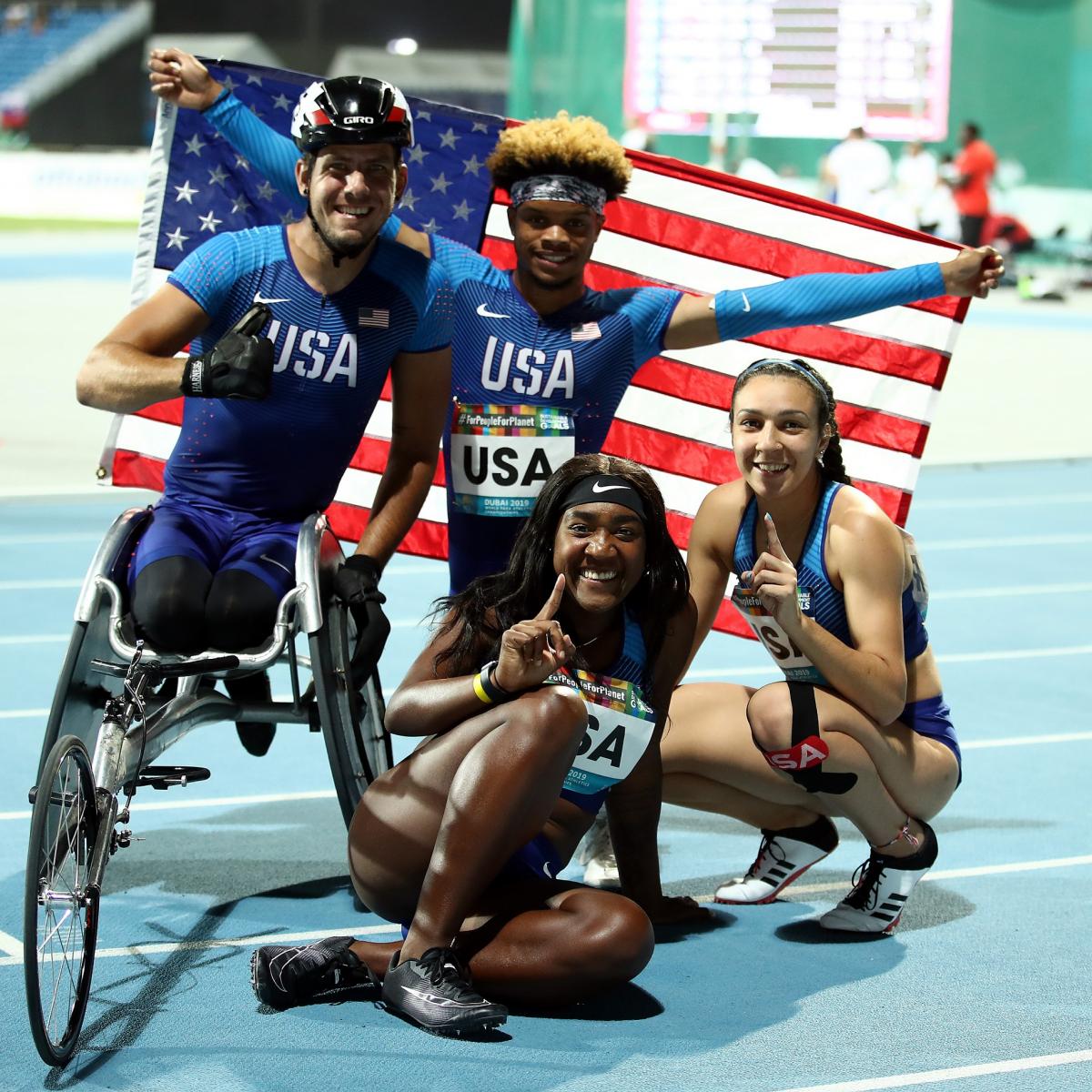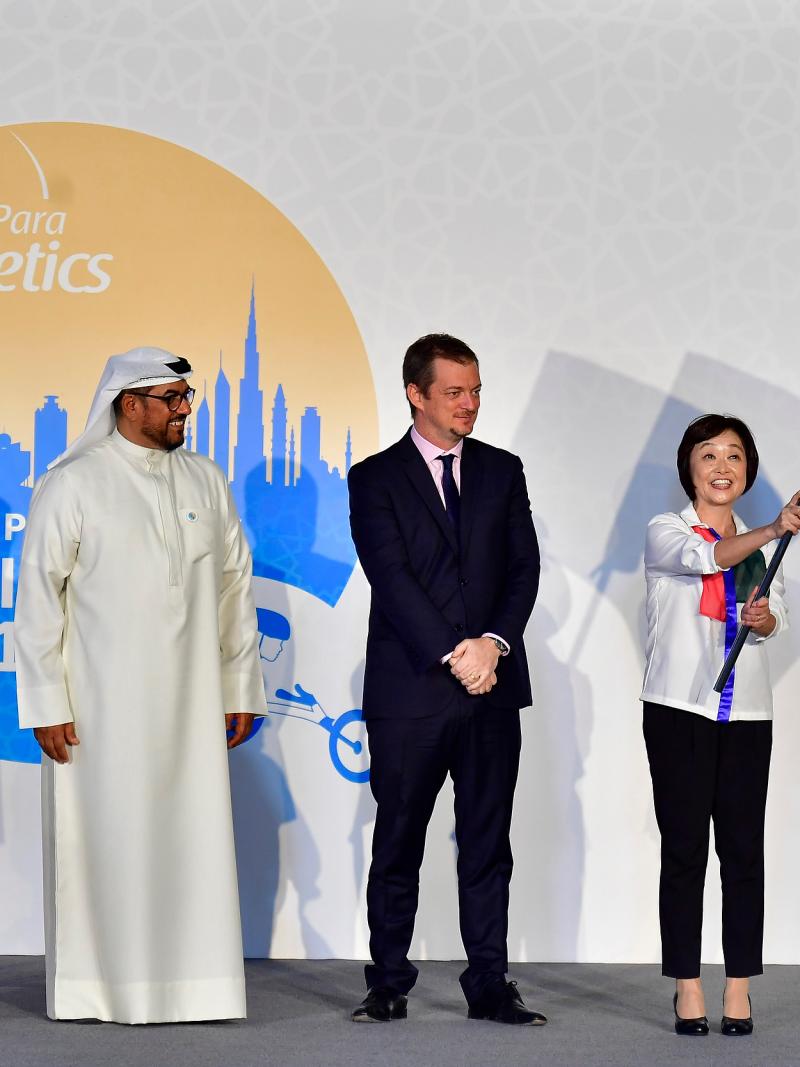Sport Week: Classification in Para Athletics
No other sport in the Paralympic Games has so many different classes. 26 Feb 2020
The World Para Athletics classification system defines who is eligible to compete in the sport. The aim is that each class should consist of athletes who have impairments that cause approximately the same amount of activity limitation in running, wheelchair racing, jumps and throws.
Track sport classes are expressed by the letter T and field sport classes start with the letter F, followed by a two-digit number. The tens digit indicates the type of impairment, while the ones digit expresses the extent of the impairment, with smaller values indicating more severe impairments.
The Tokyo 2020 Para athletics programme will have events for athletes in the following classes:
T/F11-13: Vision impairment.
T11/F11
These athletes have a very low visual acuity and/or no light perception. Athletes run with a guide.
T12/F12
Athletes have a higher visual acuity than athletes competing in the T11/F11 sport class and/or a visual field of less than five degrees radius. Athletes can choose to run with a guide or alone.
T13/F13
Athletes have the least severe vision impairment eligible for Para athletics. They have the highest visual acuity and/or a visual field of less than 20 degrees radius.
T/F20: Intellectual impairment.
T20/F20
Athletes have an intellectual impairment that impacts on the activities of running (400m, 1500m), jumping (long jump) or throwing events (shot put).
T/F31-34: Co-ordination impairments.
F31
Athletes have very poor functional range, and/or control of movement in all four limbs and the trunk. Hand function is very poor with a limited static grip, severely reduced throwing motion and poor follow through and release.
F32
Athletes have moderate to severe co-ordination impairment affecting all four limbs and trunk, but usually with slightly more function on one side of the body or in the legs.
T33/F33
Athletes have moderate to severe co-ordination impairment of three to four limbs, but typically have almost full functional control in the least impaired arm.
T34/F34
Athletes are generally affected in all four limbs but more in the lower limbs than the upper limbs. The arms and trunk demonstrate fair to good functional strength and near to able-bodied grasp, release and relatively symmetrical wheelchair propulsion.
T35/F35
Athletes are typically affected in all four limbs but more so in the legs than the arms. Running gait is moderately to severely impacted, with stride length typically shortened.
T36/F36
These athletes demonstrate moderate athetosis, ataxia and sometimes hypertonia or a mixture of these which affects all four limbs. Involuntary movements are clearly evident throughout the trunk and/or in the limbs in all sport activities.
T37/F37
Athletes have moderate hypertonia, ataxia or athetosis in one half of the body. The other side of the body may be minimally affected but always demonstrates good functional ability in running.
T38/F38
Athletes have clear evidence of hypertonia, ataxia and/or athetosis on physical assessment that will affect running. Co-ordination impairment is mild to moderate and can be in one to four limbs.
F40-41: Short stature.
There are two classes depending on the body height of the athlete and the proportionality of the upper limbs. Athletes in class F40 have a shorter stature than F41.
T42-44: Lower limb competing without prosthesis.
T42/F42
Athletes have one or more impairment types affecting hip and/or knee function in one or both limbs and with activity limitations in throws, jumps and running. Athletes with impairment(s) roughly comparable to bilateral above knee amputations are also placed in this class.
F43
Athletes have bilateral lower limb impairments competing without prostheses where both limbs meet the minimum impairment criteria, and where functional loss is in the feet, ankles and/or lower legs.
T44
Athletes competing without a prothesis with a unilateral or a combination of lower limb impairment/s where the impairment in only one limb meets the minimum impairment criteria. Functional loss is seen in one foot, ankle and/or lower leg.
T45-47: Upper limb/s affected by limb deficiency, impaired muscle power or impaired passive range of movement.
T45/F45
Athletes have impairments of both arms affecting the shoulder and/or elbow joints which are comparable to the activity limitations in running and jumping as experienced by an athlete with bilateral above elbow amputations.
T46/F46
Athletes have a unilateral upper limb impairment that affects the shoulder and/or elbow joint of one arm and which is comparable to the activity limitations in running and jumps.
T47
Athletes with a unilateral upper limb impairment resulting in some loss of function at the shoulder, elbow and wrist and which impacts sprints primarily. The impact of the impairment is comparable to the activity limitations experienced by an athlete with a unilateral through wrist/ below elbow amputation.
T51-54: Limb deficiency, leg length difference, impaired muscle power.
T51/F51
Athletes usually have decreased shoulder muscle power and difficulty straightening the elbows for a pushing action required for wheelchair racing propulsion. There is no muscle power in the trunk. Wheelchair propulsion is achieved with a pulling action using the elbow flexor and wrist extensor muscles.
T52/F52
Athletes use their shoulder, elbow and wrist muscles for wheelchair propulsion. There is poor to full muscle power in the fingers with wasting of the intrinsic muscles of the hands.
T53/F53
Athletes typically have full function of the arms but no abdominal or lower spinal muscle activity.
T54/F54
Athletes have full upper muscle power in the arms and some to full muscle power in the trunk. Athletes may have some function in the legs.
T61-64: Lower limb/s competing with prosthesis
T61/F61
Athletes with bilateral through knee or above knee limb deficiency competing with prostheses where minimum impairment criteria for lower limb deficiency are met.
T62/F62
Athletes with bilateral below knee limb deficiency competing with prostheses where minimum impairment criteria for lower limb deficiency are met.
T63/F63
Athletes with single through knee or above knee limb deficiency competing with a prosthesis where minimum impairment criteria for lower limb deficiency are met.
T64/F64
Athletes with unilateral below knee limb deficiency competing with a prosthesis where the minimum impairment criteria for lower limb deficiency and leg length.
More information on classification can be found on World Para Athletics website.
 Facebook
Facebook
 Instagram
Instagram
 Twitter
Twitter
 Youtube
Youtube




